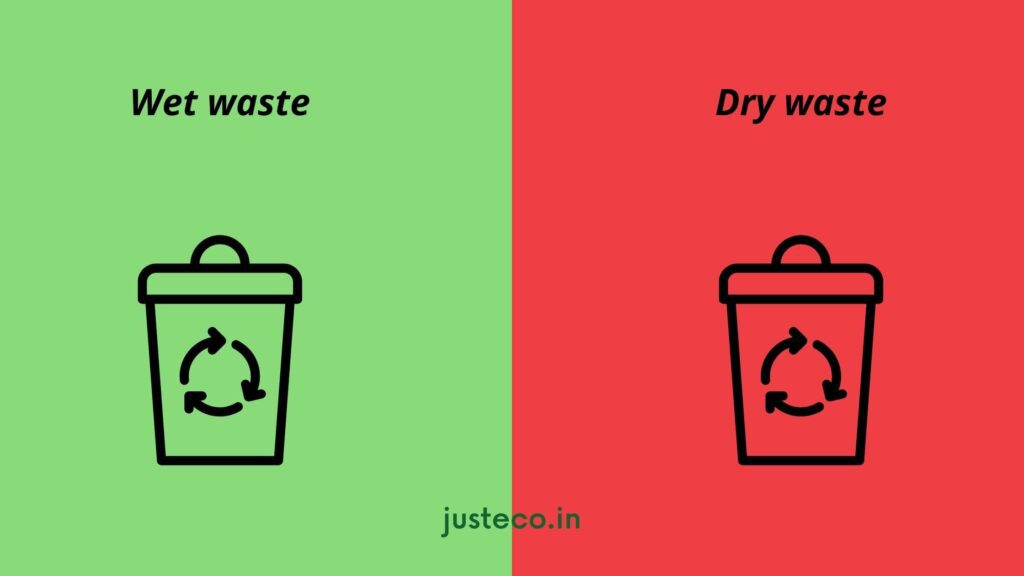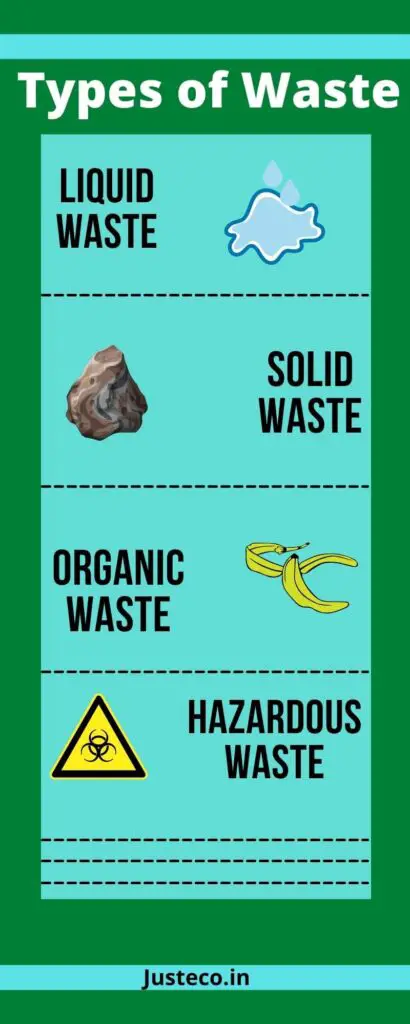In today’s world, garbage is a thing that can be seen everywhere in our surroundings,
We are producing waste all the time 24/7hours & and it is continuously growing over time. Meanwhile, many diseases are created through this waste.
Although people are aware of environmental issues, they are not doing anything to solve these problems. Very few people are trying to reduce the wastage of the planet by applying the structure of the waste segregation process in their homes, societies, urban areas, etc.
To make the environment clean is the responsibility of all individuals who live on this planet. But we think people forget the importance of environmental protection & that’s why producing & spreading waste everywhere.
According to stats, India produces around 62 million tonnes of waste per year, which is a considerable number & to decrease the number of wastage, we have to follow and understand the importance of the waste segregation process to recycle maximum waste into valuable products.
Why we’re saying that because garbage or waste are covered us from all sides
Thinking! What is segregation
Now, here we come to the main topic of this post which is waste segregation. We will cover all related aspects of waste segregation in the post, which will help to reduce the waste.
Table of Contents
ToggleWhat is waste segregation?
Waste segregation involves separating waste into different categories based on its characteristics. Typically, waste is divided into two main categories: dry waste and wet waste. This simple practice can make a significant difference in how we manage and recycle waste.
Difference between Dry waste vs Wet waste

When discussing waste segregation, we often hear about dry waste and wet waste. But what’s the difference?
Dry Waste: Non-biodegradable items such as plastics, paper, glass, metals, and fabrics. These items don’t decompose quickly and often require specialized recycling processes.
Wet Waste: Biodegradable materials like fruit and vegetable peels, eggshells, tea bags, garden waste, and cooked food. Wet waste can be composted and turned into valuable organic matter.
| S NO. | Dry waste | Wet waste |
| 1. | plastics | Fruit & Vegetable peels |
| 2. | paper, (cardboard, newspaper | egg shells |
| 3. | glass | Tea bags , tea leaves |
| 4. | leathers | Cooked food |
| 5. | metals | garden waste |
| 6. | fabric | chicken |
| 7. | thermacoal | Alluminium cans |
| 8. | rubber | Animals dung |
| 9. | bones |
Importance of waste segregation
Let’s look at the current situation of our surroundings. We will see that there are no more separate bins available for collecting the different kinds of waste anywhere (offices, schools, gardens, malls, temples, and many more public places, etc.), no more separate bins available for collecting the different kinds of waste.
People only use one dustbin and throw all types of waste in it without knowing the destructive effects of that mixed waste on their health.
Well, the main thing is why we should segregate waste? Or What happens to the environment when we segregate waste?
Great Questions, isn’t it? But It’s simple to understand the benefits we get after implementing the waste segregation process in our society. By waste segregation, the environment protection system becomes more vigorous.
It is the first & essential step of an environmental management system created for getting some advantages. Here are written below.
Reduces Landfills: Proper waste segregation reduces the amount of waste sent to landfills, freeing up space and minimizing the negative environmental impact.
Decreases Pollution: Separating waste helps prevent the release of harmful chemicals into the air, water, and soil, thus reducing pollution.
Enhances Recycling: Segregating waste makes it easier to recycle materials, thereby conserving resources and reducing the need for raw materials.
Promotes Healthier Communities: Reducing the amount of waste that attracts pests and generates unpleasant odors, waste segregation contributes to healthier living conditions.
Supports Environmental Education: Teaching children and adults about waste segregation encourages eco-friendly habits and a greater respect for the environment.
Types of waste

To make nature suitable for living is becoming more essential nowadays because as we see how fast the waste is increasing in our planet and creating more & more landfills, due to this many people are dying.
Instead of that, the recycling process of the waste is prolonged & difficult right now due to mixed waste and to make it fast. People should first understand waste segregation, types of waste, how to recycle different types of garbage. Each litter has another method or process to recycle or reuse any trash again.
On this planet, How many people know about the types of waste?
We’re sharing with you there are mainly 4 types of waste are produced from different-2 sources.
Liquid waste
Liquid wastes are one of the most common wastes produced everywhere, whether it is houses, society, schools, or industries. All wastes which are in liquid form are considered liquid waste.
Here’s are some examples of liquid wastes
- Grease
- Oil
- Dirty water or rainwater
- Detergent water
- Chemicals coming from industries, factories
Liquid wastes are more dangerous for the environment because they dissolve in the water. Because of that, it pollutes the water badly & in this case, it will become more difficult to purify the water again.
Solid waste
Generally, solid wastes are classified into 4 categories which could be seen very easily.
Paper waste
All the paper which you used once and after that throw away in the dustbin like newspaper, cardboards, wrapping paper
Plastic waste
It includes all products built by plastic, such as plastic bottles, containers, sheets, pens, and glasses. and plastic releases harmful gases when it burns & even a few types of plastic can be recycled
Related Post: 10 Harmful Effects Of Plastic On The Environment | Causes + Effortless Solutions
Metal waste
All iron, aluminum, copper, and such type of waste are considered metal waste. Hence, these type of waste can be reused and recycled easily through the molding process.
Glass and ceramic wastes
This waste only can be recycled by manufacturers who specialize in doing it. Not anyone can recycle it.
Organic Waste
Organic waste is also called biodegradable waste. It is the most widespread & helpful waste. It includes all the waste from plants and animals like cow dung, vegetable, and fruit peels, wasted food, rotten flowers, plants, and many more related things considered organic waste.
The best example is, this wastage is used to make biogas. Many people have been doing great work for a long time and making gas for cooking their food at home.
Hazardous Waste
This last waste type is Hazardous waste which is a dangerous waste for everyone’s health. It includes flammable and reactive materials.
Conclusion
Conclusion: it concludes that the importance of waste segregation, which is discussed above, is worth it for saving the environment for future generations & also helps to make our planet clean, secure, and safe for livelihood, and helps in many places.
Hence, After getting all the knowledge about segregation, people should start following the waste segregation method at home from today and start using two different-2 bins.
Frequently Asked Questions
Q1. Why is waste segregation important?
Waste segregation is crucial for reducing pollution, enhancing recycling efforts, and creating healthier communities. It helps manage waste more efficiently and reduces the strain on landfills.
Q2. How to do Waste segregation at home?
To manage the waste segregation method at your home, the first you should do is keep two dustbins in your home. In the first bin, collect all the dry waste (non-biodegradable), and in the second bin, start collecting wet waste (biodegradable waste)
Q3. What are dry waste and wet waste?
Dry waste – It includes all the daily used things available in your surroundings that can’t be recycled directly or items that are non-biodegradable such as glass, plastics, clothes, rubber, metals, etc.
Wet waste – All the waste produced in the kitchen is considered as wet waste like vegetable & fruit peels and seeds, wasted food, juices, eggshells, flowers, etc.
Q4. How can waste segregation help the community and families?
Waste segregation reduces waste to a large extent which will occupy the space of landfills & all these spaces communities use for social purposes. It is also suitable for families and their kids to spend time without any fear of getting sick.
Q5. What happens if we don’t segregate waste?
Without segregation, waste can mix and create harmful pollutants, attract pests, and take up more space in landfills. This can lead to environmental degradation and health issues.
Q6. What is a Waste segregation machine?
A waste segregation machine is a vast machine placed in the industries for separating the waste and collecting same material waste together so the recycling can happen quickly. This machine is also called a waste sorting machine.
More Article:












